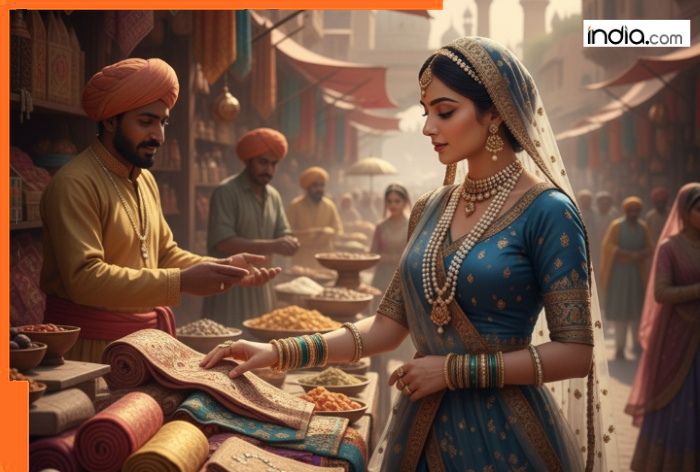Lifestyle
How Shah Jahan Created Chandni Chowk for His Beloved Daughter

Chandni Chowk, a historic marketplace in the heart of Old Delhi, has become a beloved destination for millions of tourists and locals alike. Established nearly 375 years ago, this bustling market was commissioned by the fifth Mughal emperor, Shah Jahan, for his daughter, Jahanara Begum.
According to historical records, Shah Jahan initiated the construction of Chandni Chowk in 1650 AD when he relocated the Mughal Empire’s capital from Agra to what is now known as Old Delhi. Jahanara Begum’s fondness for shopping inspired her father to create a vibrant marketplace directly in front of the Lal Quila (Red Fort).
Design and Structure of the Market
The construction of this iconic bazaar began in 1650, with Jahanara Begum personally overseeing the design. She envisioned a commercial hub that was both bustling and aesthetically appealing. Chandni Chowk featured more than 1,500 businesses divided into four main sections, including Urdu Bazar, Johri Bazar, and Ashrafi Bazar.
A central canal, fed by the waters of the Yamuna River, ran through the market, enhancing its visual charm and providing a serene atmosphere. Initially named Shahjahanabad bazaar, the market was later renamed Chandni Chowk, which translates to “Moonlight Square.” This name reflects the enchanting moonlight that once shimmered off the waters of the canal.
The Economic Impact of Chandni Chowk
During Shah Jahan’s reign, Chandni Chowk evolved into a significant commercial and cultural center within the Mughal capital. Its shops were strategically arranged to showcase the immense wealth of the empire, attracting merchants from Asia and Europe.
At its height, Chandni Chowk became a prestigious locality where affluent residents built grand mansions. The market’s diverse array of goods played a crucial role in boosting trade and the economy of Delhi, making it a vibrant hub of commerce.
Today, while Chandni Chowk remains a major commercial center in Delhi, it has lost some of its former grandeur. The once spacious bazaar is now characterized by narrow, crowded lanes, reflecting the challenges of overpopulation. Despite these changes, the market continues to be an essential part of Delhi’s cultural and economic landscape, drawing visitors eager to experience its rich history and vibrant atmosphere.
-

 World5 months ago
World5 months agoSBI Announces QIP Floor Price at ₹811.05 Per Share
-

 Lifestyle5 months ago
Lifestyle5 months agoCept Unveils ₹3.1 Crore Urban Mobility Plan for Sustainable Growth
-

 Science4 months ago
Science4 months agoNew Blood Group Discovered in South Indian Woman at Rotary Centre
-

 World5 months ago
World5 months agoTorrential Rains Cause Flash Flooding in New York and New Jersey
-

 Top Stories5 months ago
Top Stories5 months agoKonkani Cultural Organisation to Host Pearl Jubilee in Abu Dhabi
-

 Sports4 months ago
Sports4 months agoBroad Advocates for Bowling Change Ahead of Final Test Against India
-

 Science5 months ago
Science5 months agoNothing Headphone 1 Review: A Bold Contender in Audio Design
-

 Top Stories5 months ago
Top Stories5 months agoAir India Crash Investigation Highlights Boeing Fuel Switch Concerns
-

 Business5 months ago
Business5 months agoIndian Stock Market Rebounds: Sensex and Nifty Rise After Four-Day Decline
-

 Sports4 months ago
Sports4 months agoCristian Totti Retires at 19: Pressure of Fame Takes Toll
-

 Politics5 months ago
Politics5 months agoAbandoned Doberman Finds New Home After Journey to Prague
-

 Top Stories5 months ago
Top Stories5 months agoPatna Bank Manager Abhishek Varun Found Dead in Well









